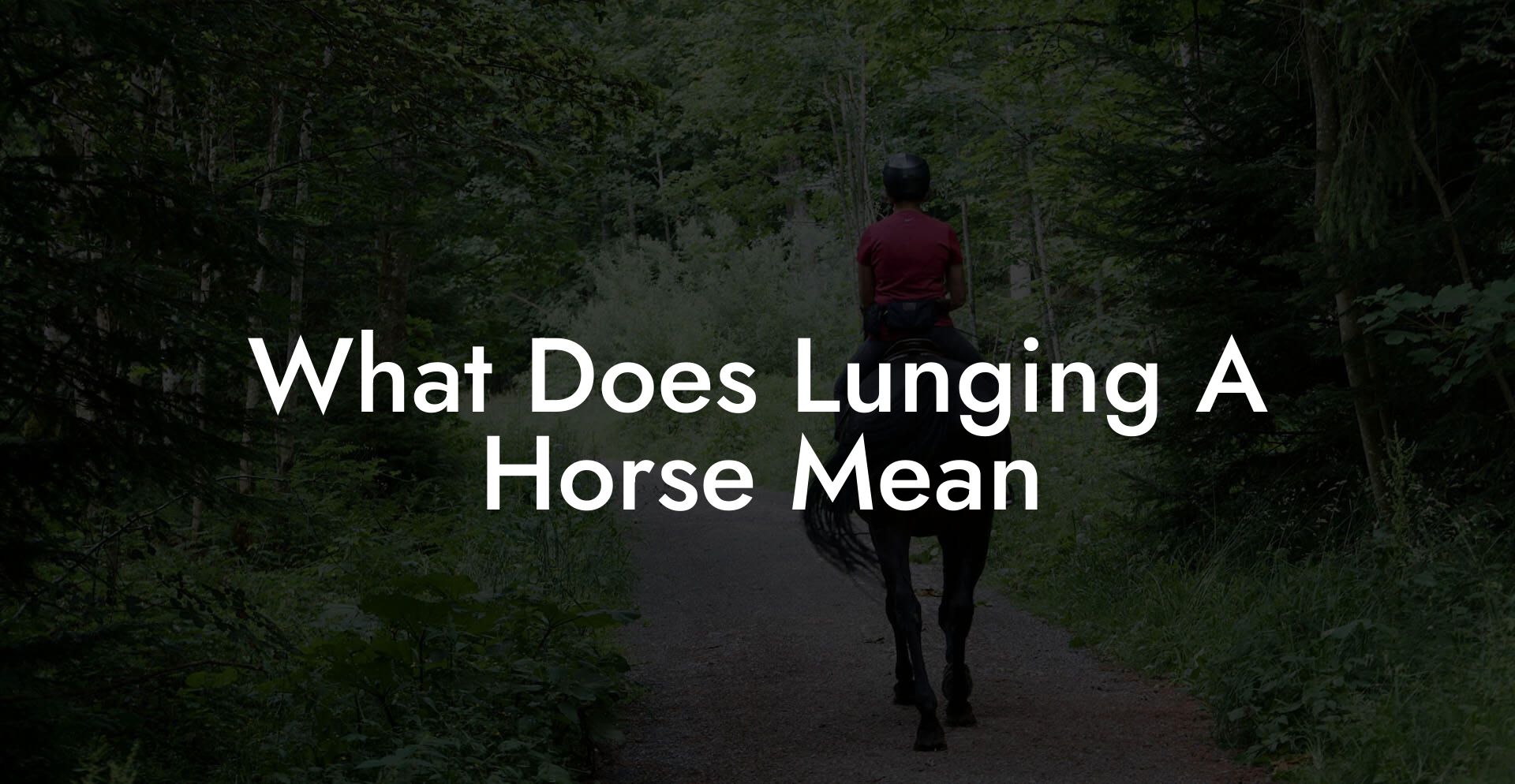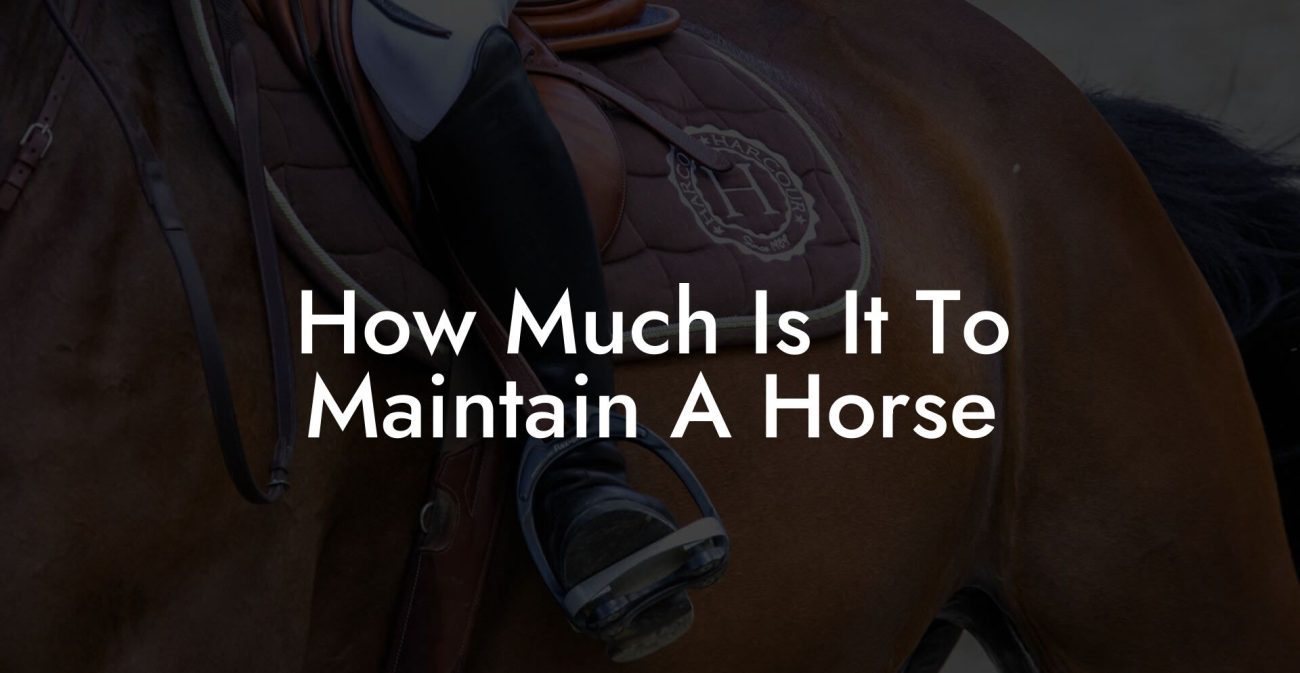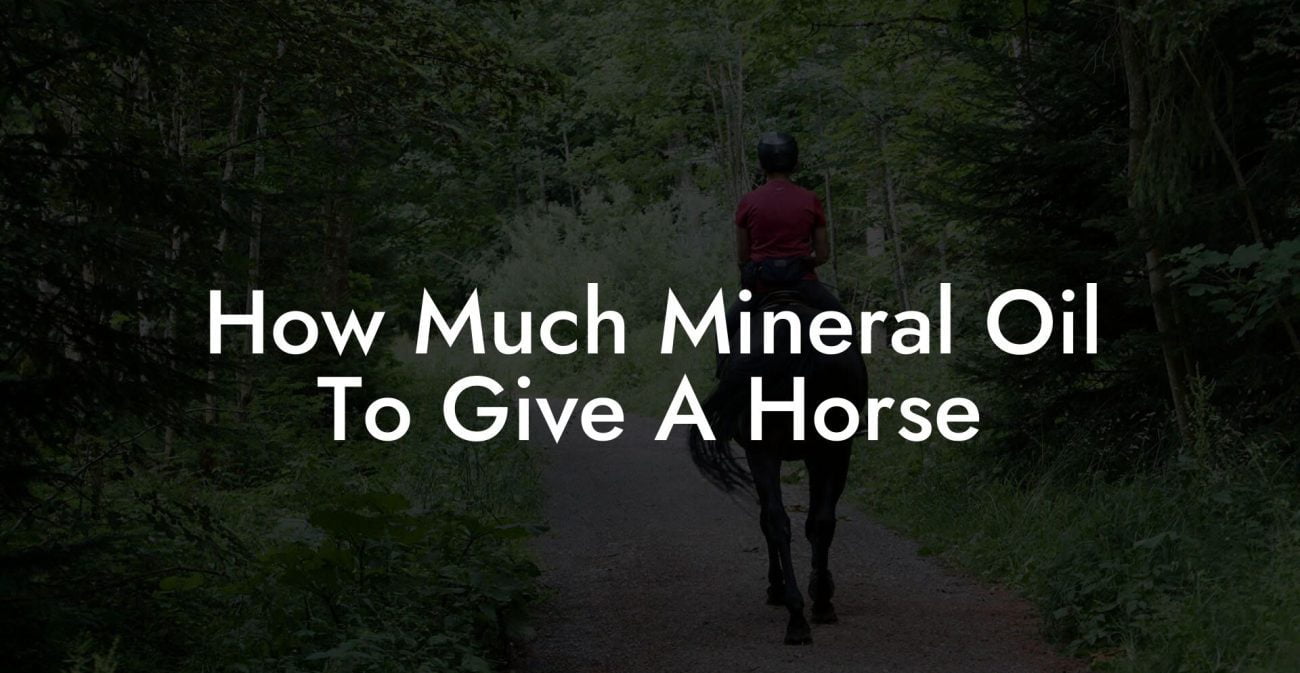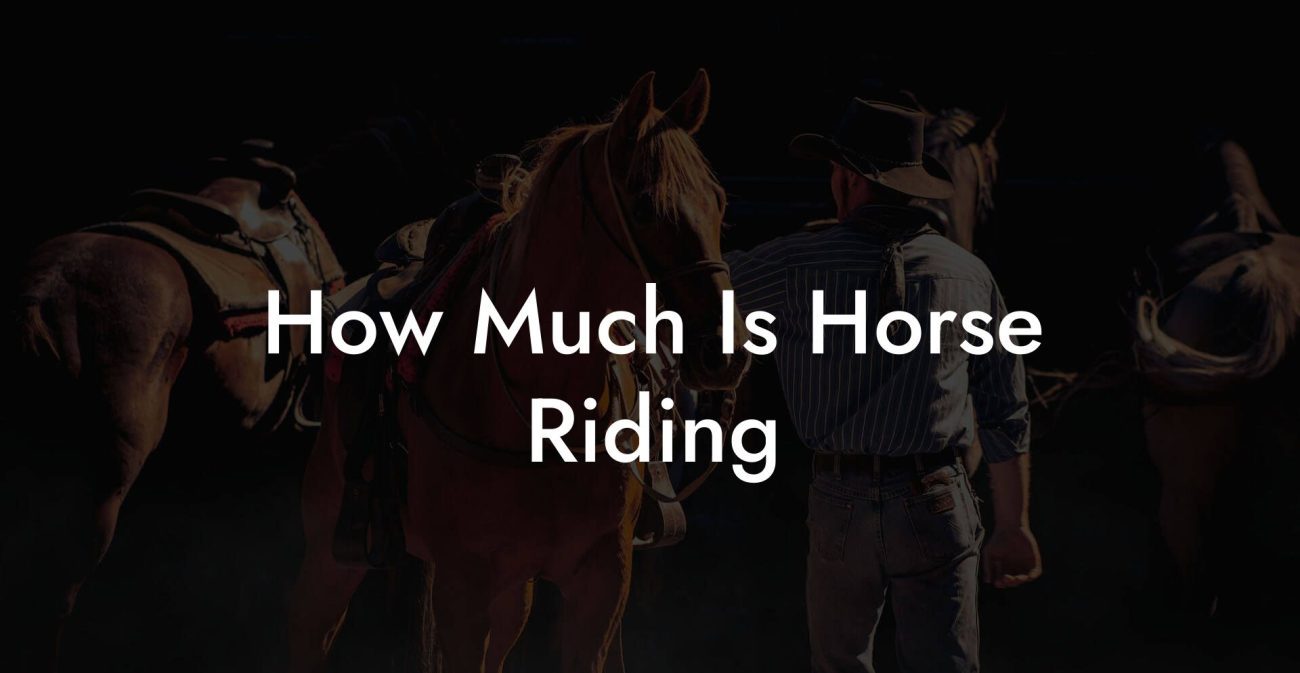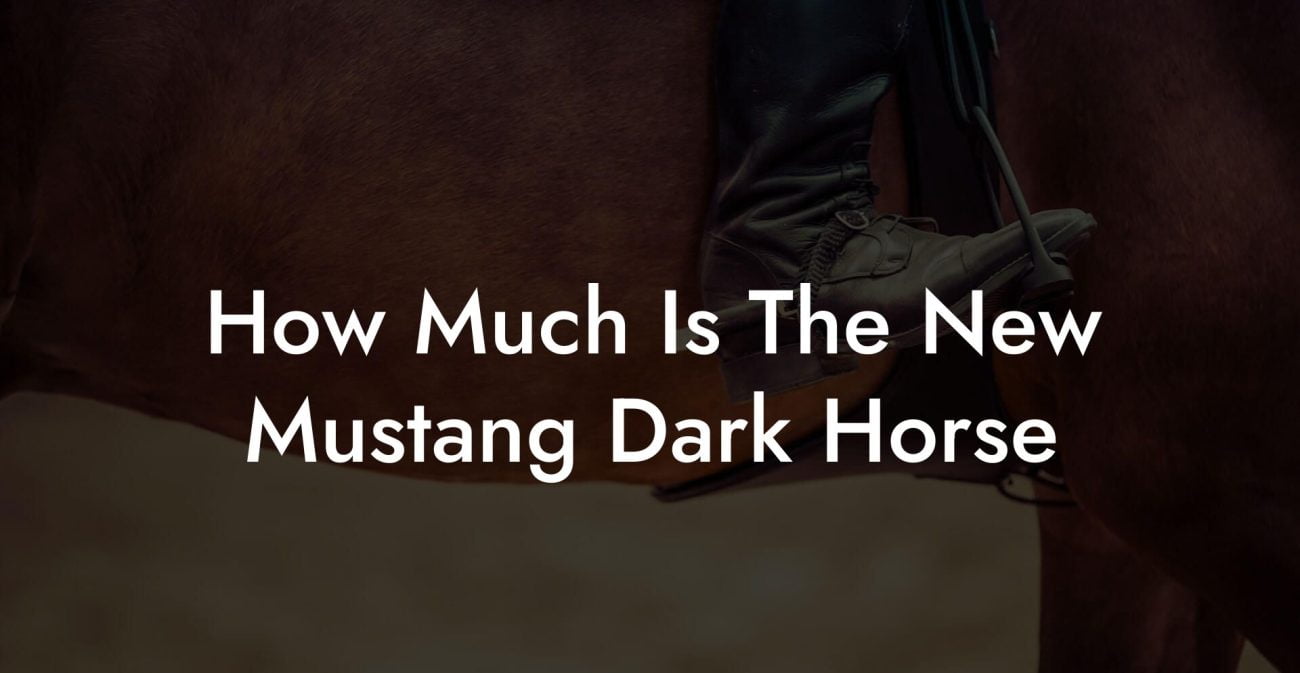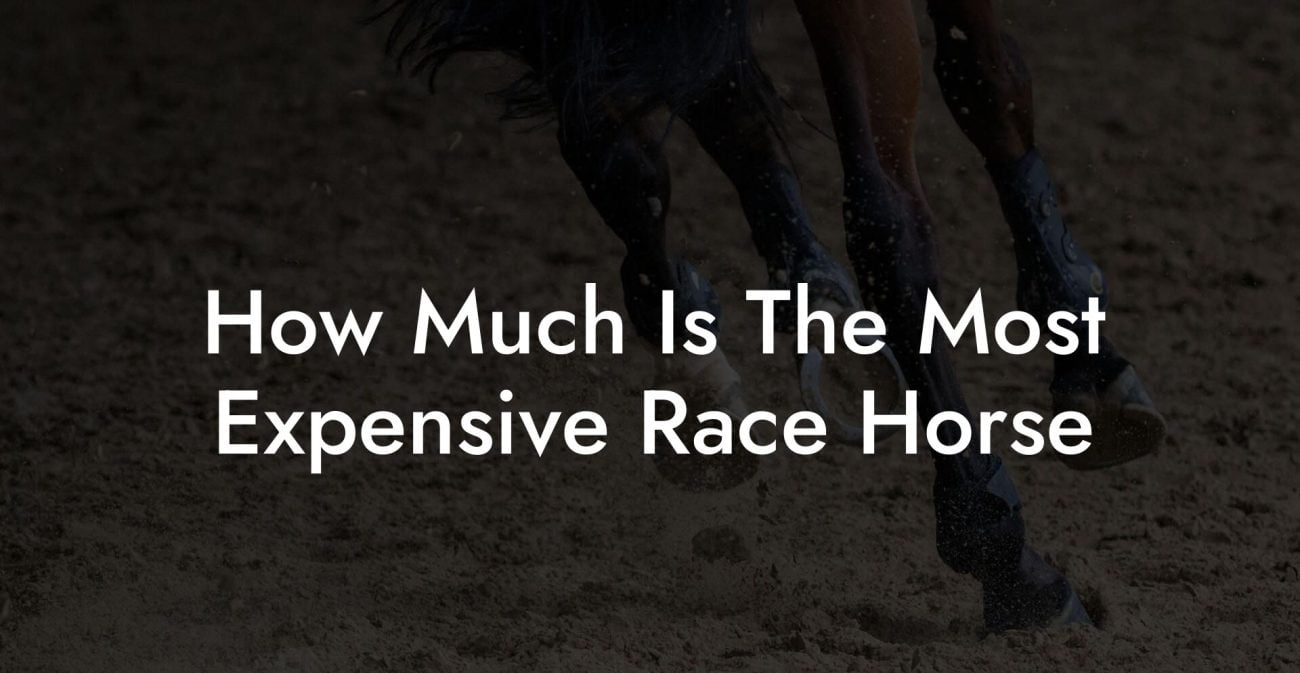Picture this: your equine companion gallops gracefully in the arena, head held high and muscles rippling with power, all thanks to a training method that’s as ancient as it is modern. Lunging a horse isn’t just a trend; it’s a dynamic blend of art and science that transforms training sessions into invigorating workouts for your four-legged friend. Whether you're a millennial dreamer or a Gen-Z equine enthusiast, understanding and mastering the technique of lunging your horse can be your secret weapon in achieving that perfect balance of discipline, freedom, and fun.
Quick Links to Useful Sections
- What Does Lunging a Horse Mean?
- The History and Evolution of Lunging in Equine Training
- Benefits of Lunging: More Than Just a Workout
- Enhanced Muscular Balance and Flexibility
- Improved Cardiovascular health
- Better Mental Focus and Responsiveness
- Joint Health and Rehabilitation
- Strengthened Trainer-Horse Relationship
- Getting Started: Essential equipment and Setup
- Lunge Line and Lunge Reins
- Training Aids: Lunge Whip and Ground Poles
- Designated Training Area
- Proper Attire for Trainer and Horse
- Step-by-Step Guide: How to Lunge Your Horse
- Step 1: Prepare Your Space and Equipment
- Step 2: Introduce the Horse to the Lunge Line
- Step 3: Initiate the Circle
- Step 4: Transition and Change Direction
- Step 5: Incorporate Training Aids and Variations
- Step 6: Cool Down and Recovery
- Common Mistakes and How to Avoid Them
- Overusing the Lunge Whip
- Poorly Defined Training Areas
- Inconsistent Cues
- Ignoring the Horse’s Body Language
- Skipping the Warm-Up or Cool-Down
- Integrating Lunging Into a Holistic Equine Care Routine
- Physical Fitness and Conditioning
- Mental Stimulation and Behavioral Conditioning
- Injury Prevention and Rehabilitation
- Environmental Enrichment and Stress Relief
- Alternative Training Methods: When Lunging Isn’t the Only Answer
- Free Schooling
- Ridden Work and Ground Work Combination
- Clicker Training and Positive Reinforcement
- Safety First: Best Practices for a Secure Lunging Session
- Always Monitor Your Horse
- Secure the Training Area
- Proper Handling and Communication
- Utilize a Spotter When Needed
- Modern Innovations and Technology in Lunging
- Wearable Sensors and Fitness Trackers
- Mobile Apps for Training Management
- Virtual Communities and Online Masterclasses
- Tips and Tricks for Gen-Z and Millennial Horse Owners
- Leverage Social Media for Inspiration
- Embrace a Holistic Approach
- Invest in Sustainable Gear
- Document Your Journey
- Resources and Community Support: Your Next Steps
- Frequently Asked Questions About Lunging a Horse
- Your Journey to Mastering Lunging: Embrace the Rhythm, Embrace the Bond
What Does Lunging a Horse Mean?
In the world of equine care, "lunging" refers to the practice of training your horse from the ground by encouraging them to move in a controlled circle at various gaits. Think of it as a blend between a gymnast’s warm-up and a personal training session, with your horse as the star athlete. The process involves using a long line, called a lunge line, and a lunge whip (used sparingly and only as a cue) to signal the horse to move and change direction, all while you supervise from a safe distance.
Lunging offers a unique opportunity to build your horse’s strength, balance, and responsiveness. It’s a training method that not only boosts fitness but also deepens the bond between trainer and horse, without the added pressure of being on horseback. Moreover, lunging is incredibly versatile. It can be incorporated as part of a warm-up routine before more intensive work, used as a standalone workout, or integrated into rehabilitation programs for horses recovering from injuries.
At its core, lunging a horse is about communication. It requires a clear, consistent language between you and your horse, a language built on trust, timing, and an intuitive understanding of body language. As you become more adept at lunging, you’ll notice your horse responding more quickly to your commands, creating a sublime synergy that enhances both performance and well-being.
In this guide, we’re diving into every facet of lunging: what it means, why it matters in modern equine care, and how you can integrate lunging techniques into your regular training regimen. Get ready to unlock the potential of lunging and elevate your horse’s training experience.
The History and Evolution of Lunging in Equine Training
The practice of lunging has roots that trace back centuries, with evidence suggesting that ancient horse trainers used similar methods to build and maintain their steeds’ fitness. Over time, lunging evolved from a rudimentary training exercise into a refined technique honed by equestrian experts around the world. Today, lunging marries traditional approaches with modern advancements in animal behavior science and sports training.
Historically, lunging was primarily a method of exercising horses when riding wasn’t feasible, be it due to inclement weather, limited resources, or the need to rehabilitate horses after injuries. Early trainers discovered that letting a horse work off-leash in a controlled circular pattern allowed for a safe and efficient workout, all while fostering better muscle development and joint flexibility.
As equestrian disciplines advanced, lunging techniques were refined. Innovations such as adjustable lunge lines, ergonomic lunge whips, and the integration of ground poles and cavaletti have transformed lunging from a basic exercise into a comprehensive training tool. Modern trainers combine lunging with elements from natural horsemanship, emphasizing communication, trust, and positive reinforcement.
Today, lunging is embraced by trainers of all stripes, from competitive riders preparing their horses for high-intensity events to rehabilitators helping injured horses regain strength and coordination. As a result, lunging has become an indispensable part of contemporary equine training routines, encapsulating both the wisdom of the past and the innovation of modern practices.
Benefits of Lunging: More Than Just a Workout
Lunging offers an impressive array of benefits that extend beyond physical exercise. Whether you’re a seasoned trainer or a curious newcomer, understanding these benefits can help you appreciate why lunging is such a popular training method.
Enhanced Muscular Balance and Flexibility
Lunging encourages your horse to move evenly in a controlled circle, which promotes balanced muscle development throughout their body. This balanced movement helps improve flexibility, reduce stiffness, and prevent the development of muscle imbalances, all of which are essential for a long, healthy equine career.
Improved Cardiovascular health
A well-lunged horse benefits from increased heart rate and improved circulation. The continuous movement helps build overall endurance, which is beneficial whether your horse is headed for the show ring or simply enjoying a leisurely ride.
Better Mental Focus and Responsiveness
Lunging isn’t just physical, it’s mental too. The technique encourages your horse to pay attention to your cues and respond correctly, thereby sharpening their mental acuity. Over time, this improved responsiveness can enhance performance under saddle and lead to a more harmonious partnership.
Joint Health and Rehabilitation
For horses recovering from injuries or surgeries, a carefully managed lunging routine can facilitate the healing process by gently working the joints without the strain of carrying a rider. This low-impact exercise is especially useful for improving circulation and reducing inflammation in sensitive areas.
Strengthened Trainer-Horse Relationship
There’s something inherently bonding about working the ground with your horse. Lunging requires clear communication and mutual trust, allowing both trainer and horse to build a stronger, more intuitive relationship. This connection often translates into improved performance in the arena and a more enjoyable experience for both parties.
Ultimately, lunging provides a holistic workout that enhances both the physical and mental well-being of your horse. It’s a versatile tool that can be adapted to suit horses of different ages, sizes, and training levels, from young, energetic foals to seasoned, high-performance athletes.
Getting Started: Essential equipment and Setup
Before you can start lunging your horse, it’s important to assemble the right gear and create a safe, controlled environment. Armed with the right equipment, you’ll be well on your way to a productive lunging session.
Lunge Line and Lunge Reins
The lunge line is perhaps the most critical piece of equipment and usually ranges from 25 to 40 feet in length, giving your horse plenty of room to move while still being under control. Lunge reins or lunge cords attach to the halter and provide the necessary means for signaling direction and pace.
Look for equipment made from durable materials that can withstand the wear and tear of regular use. Adjustable lunge lines are ideal as they allow you to customize the length based on your training area and your horse’s size.
Training Aids: Lunge Whip and Ground Poles
A lunge whip can be handy for giving subtle cues, but it’s important to use it sparingly and always with a gentle touch. Overuse or harsh handling can lead to confusion and resentment. Ground poles and cavaletti can be added to your lunging routine to enhance balance, coordination, and focus. These aids encourage your horse to adjust their stride and lift their feet, building strength and confidence.
Designated Training Area
Safety should be your top priority. Choose an open, enclosed space free from hazards. Whether it’s a dedicated round pen, an arena, or a well-marked section of pasture, the area should be large enough for your horse to move freely in a circle. Ensure the ground is even and free from debris to prevent any slips or injuries.
Proper Attire for Trainer and Horse
As a trainer, make sure you’re dressed in suitable attire that allows you to move easily while offering safety. Sturdy boots with good grip and comfortable clothing are key. For your horse, a well-fitted halter is essential for effective control during lunging. Additionally, some trainers use a lunge line swivel to prevent twisting and tangling.
With these essentials in place, you’ll create a supportive and safe environment where lunging can be both effective and enjoyable.
Step-by-Step Guide: How to Lunge Your Horse
Whether you’re a complete newbie or seeking to refine your technique, this step-by-step guide will walk you through the process of lunging your horse safely and effectively.
Step 1: Prepare Your Space and Equipment
As discussed, safety is paramount. Start by securing a well-defined circular area, free from obstacles. Check all your gear, ensure the lunge line isn’t frayed, the halter fits properly, and that training aids like ground poles are in place. A calm, controlled atmosphere sets the tone for a positive session.
Step 2: Introduce the Horse to the Lunge Line
Not every horse will immediately take to the lunge line. Begin with a few gentle sessions where you simply allow your horse to explore the line. Gradually introduce light pressure and positive reinforcement, such as treats or verbal praise, to associate the lunge line with a fun experience.
Step 3: Initiate the Circle
With the horse comfortable, start guiding them into a circular motion. Stand in the center of the circle while holding the lunge line firmly, and use subtle cues, like a gentle tug or verbal command, to encourage movement. Begin at a walk, then gradually increase speed to a trot or canter, based on your training goals.
It’s crucial to keep a close eye on your horse’s body language. Signs of fatigue or stress mean it’s time to slow down or take a break. The goal is consistent, fluid motion without forcing the horse into uncomfortable speeds.
Step 4: Transition and Change Direction
Once your horse has gotten comfortable moving in one direction, it’s time to switch directions. This not only challenges their balance and responsiveness but also prevents one-sided muscle development. Gradually alter your cues to signal a left-to-right transition, always ensuring you reward your horse for a smooth change.
Step 5: Incorporate Training Aids and Variations
For advanced sessions, integrate ground poles or cavaletti to add complexity to the routine. You might also experiment with varying the circle’s radius, shorter circles challenge coordination, while larger circles promote endurance. Use the lunge whip sparingly as a reinforcement tool, and always maintain a positive tone in your commands.
Step 6: Cool Down and Recovery
Like any workout, lunging should end with a cool down to prevent muscle stiffness and ensure your horse leaves the session with a sense of accomplishment. Walk your horse gently around the circle for a few minutes before gradually releasing the lunge line. Offer plenty of water, and take a moment to give your horse a few pats of appreciation.
With these steps, lunging transforms into a harmonious blend of exercise, communication, and care, crafting a session that leaves both you and your horse feeling invigorated and connected.
Common Mistakes and How to Avoid Them
Even experienced trainers can sometimes stumble into pitfalls during lunging sessions. Recognizing common mistakes can help you refine your technique and ensure a smooth, safe experience for your horse.
Overusing the Lunge Whip
While a lunge whip is a useful tool, overusing it can lead to confusion and even fear in your horse. Remember, subtlety is key, your voice and body language should do most of the communicating.
Poorly Defined Training Areas
Lunging in an environment with too many distractions, obstacles, or uneven ground can be hazardous. Ensure your training area is secure and free from hazards that may disrupt your session or put your horse at risk.
Inconsistent Cues
Consistency builds trust. Using different signals for the same command or frequently changing your approach can confuse your horse. Develop a clear and consistent set of commands, and stick with them throughout your training sessions.
Ignoring the Horse’s Body Language
Your horse’s body speaks volumes. Signs of stress, fatigue, or resistance should never be ignored. Adjust your session accordingly, slow down if necessary, or allow your horse a moment to relax. The bond you build through this attentive care will pay off in smoother training sessions.
Skipping the Warm-Up or Cool-Down
Just like human athletes, horses need a proper warm-up and cool-down to prevent injury and promote recovery. Always start with a slow-paced walk and finish with a relaxing cool-down to ensure your horse’s muscles remain supple and ready for the next session.
By keeping these common mistakes in mind and actively working to avoid them, you’ll create a training environment that is both productive and enjoyable, laying the foundation for a long-term, effective lunging routine.
Integrating Lunging Into a Holistic Equine Care Routine
For millennial and Gen-Z horse owners, lunging isn’t just an isolated training method, it’s a crucial component of a larger, holistic equine care strategy. Today’s horse care philosophy emphasizes a balance between physical exercise, mental conditioning, and overall well-being.
Physical Fitness and Conditioning
Regular lunging sessions help maintain your horse’s muscular balance and cardiovascular health. Combined with other forms of exercise, like ridden work, trail rides, and arena training, lunging plays a key role in keeping your horse in peak physical condition.
Mental Stimulation and Behavioral Conditioning
Lunging provides mental stimulation by challenging your horse to listen, adapt, and respond to your cues. This process not only refines their motor skills but also cultivates a sense of focus and responsiveness that benefits all aspects of training. As your horse begins to anticipate your cues, you’ll notice improved behavior both in and out of the arena.
Injury Prevention and Rehabilitation
Incorporating lunging in rehabilitation routines can be a game-changer. For horses recovering from injury, controlled lunging is a low-impact way to rebuild muscle strength and joint mobility. Always consult with a veterinarian or equine therapist to design a program that respects your horse’s current abilities.
Environmental Enrichment and Stress Relief
A well-structured lunging session can also serve as a mental break for your horse. The rhythmic motion, combined with clear communication, offers a form of meditative movement that enhances overall well-being and reduces stress.
When integrated into your overall equine care routine, lunging is more than just training, it’s a pathway to building a healthier, happier horse, with a deeper, more communicative relationship between you both.
Alternative Training Methods: When Lunging Isn’t the Only Answer
While lunging is a powerful training method, it’s only one tool in the vast toolbox of equine care. There are times when alternative methods may be better suited for your horse’s needs.
Free Schooling
Free schooling allows your horse to move at their own pace in an open field with minimal interference. This method emphasizes natural movement patterns and is ideal for building a baseline of comfort and self-awareness.
Ridden Work and Ground Work Combination
Combining lunging with traditional ridden work can help transition skills seamlessly from ground to saddle. This integrated approach builds confidence and reinforces commands while accommodating different learning styles.
Clicker Training and Positive Reinforcement
For horses that may be more sensitive or easily distracted, clicker training uses sound cues and rewards to reinforce good behavior. Incorporating elements of positive reinforcement can enhance lunging sessions and create an environment of mutual trust.
Ultimately, the best approach is one that considers your horse’s personality, physical condition, and learning style. Experiment with various methods until you find the perfect equilibrium that fosters growth, resilience, and a mutual love for the process.
Safety First: Best Practices for a Secure Lunging Session
Safety is the cornerstone of any successful lunging session. Both your horse’s well-being and your own protection depend on strict adherence to safe practices.
Always Monitor Your Horse
Keep a vigilant eye on your horse’s body language. Any signs of pain, fatigue, or anxiety should prompt immediate adjustments in pace, direction, or even a pause in the session.
Secure the Training Area
Ensure that the area is completely secure. Fencing should be intact and free of holes, and the ground should be even to prevent slips or injuries. Avoid lunging in areas with distractions like livestock or heavy machinery.
Proper Handling and Communication
Use consistent, calm cues when guiding your horse. Abrupt movements or loud noises can startle your horse, leading to dangerous situations. Always be aware of your surroundings and maintain a comfortable distance.
Utilize a Spotter When Needed
In cases where you’re working in a larger group or with an inexperienced horse, consider enlisting the help of a spotter. An extra set of eyes can notice details you might miss, ensuring an even safer environment.
Adhering to these safety practices will not only protect you and your horse but will also enhance the overall effectiveness of your lunging sessions.
Modern Innovations and Technology in Lunging
With the rise of innovative technology in equine care, lunging has seen some exciting advancements that can dramatically enhance your training sessions.
Wearable Sensors and Fitness Trackers
Just as athletes monitor their performance with smart devices, modern equine training now benefits from wearable sensors. These devices track muscle activity, heart rate, and even gait patterns, providing you with invaluable data that can optimize your lunging sessions.
Mobile Apps for Training Management
Several mobile apps are now specifically designed for equine training. From scheduling sessions to monitoring progress and recording observations, these digital tools can streamline your process and make data-driven decisions.
Virtual Communities and Online Masterclasses
The digital age has brought a wealth of online resources to the equine world. Virtual communities allow trainers from around the globe to share tips, experiences, and troubleshooting advice. In addition, masterclasses and webinars led by top trainers can offer fresh insights and new techniques, ensuring that your lunging skills stay ahead of the curve.
Embracing technology in lunging training not only simplifies management but also opens up a world of knowledge that can help you refine your equine care practices.
Tips and Tricks for Gen-Z and Millennial Horse Owners
For the modern equestrian enthusiast, training isn’t just a necessity, it’s a lifestyle. Here are some innovative tips tailored just for the Gen-Z and millennial crowd:
Leverage Social Media for Inspiration
Instagram, TikTok, and YouTube are treasure troves of creative lunging techniques. Follow leading trainers and engage with online equine communities to stay updated on the latest trends and tips.
Embrace a Holistic Approach
Today’s horse owners are increasingly aware of the importance of a balanced lifestyle. Complement your training sessions with mindfulness practices, nutritious diets, and alternative therapies, not only for your horse but for yourself too.
Invest in Sustainable Gear
Consider eco-friendly, durable training equipment that lasts. Many modern brands are now dedicated to sustainability, ensuring that your lunging gear is both high-performance and environmentally responsible.
Document Your Journey
Whether you’re a budding influencer or simply passionate about your horse’s progress, documenting your training sessions can be incredibly rewarding. Share your milestones, setbacks, and creative breakthroughs with a growing online community that understands the ups and downs of equine care.
The world of modern equine care is evolving, and as a Gen-Z or millennial horse owner, you have the unique opportunity to blend tradition with innovation. Embrace these tips and make lunging a cornerstone of your holistic training routine.
Resources and Community Support: Your Next Steps
The journey towards mastering lunging is best traveled together. Fortunately, there’s a vibrant community and a wealth of resources available to guide you along the way.
Join local equestrian clubs, online forums, and social media groups dedicated to lunging and holistic horse care. Whether it’s exchanging training tips, seeking advice from seasoned professionals, or simply finding a community that shares your passion, these resources can be invaluable. Many equine practitioners offer workshops, webinars, and even one-on-one coaching sessions. Don’t hesitate to invest in your education as you navigate the exciting world of lunging.
Additionally, keep an eye out for local events, competitions, and demonstrations. These gatherings provide opportunities to see lunging in action, learn new techniques, and network with fellow horse enthusiasts.
Remember, the more you engage with the community, the more you’ll discover about the diverse and innovative approaches to equine care. Your commitment to learning and sharing will not only enhance your skills but will also contribute to the evolution of modern lunging practices.
Frequently Asked Questions About Lunging a Horse
Below are some common questions that horse owners and trainers have about lunging, along with detailed answers that shed light on various aspects of the practice.
1. What exactly is lunging a horse?
Lunging a horse is a training method where a horse is encouraged to move in a circle around a trainer using a lunge line and minimal aids. This method helps improve balance, strength, and responsiveness while forming the groundwork for more advanced training.
2. Is lunging suitable for horses of all ages?
Yes, lunging can be adapted to suit horses of various ages and training levels. For young horses or those recovering from injury, a gentle, controlled lunging session can help build confidence and strength gradually.
3. How often should I lunge my horse?
The frequency of lunging sessions will vary based on your horse’s fitness level, training goals, and overall workload. Generally, incorporating lunging two to three times a week into your training routine is a good starting point.
4. What are the benefits of lunging my horse before riding?
Lunging as a warm-up can enhance muscle flexibility, improve circulation, and help your horse become mentally focused before the main riding session. This preparation reduces the risk of injury and improves performance under saddle.
5. Which equipment is essential for a safe lunging session?
Basic lunging equipment includes a well-maintained lunge line (or cord), a properly fitting halter, and optionally, a lunge whip for minimal cues. Additionally, a secure, spacious, and obstacle-free area is crucial for safety.
6. How does lunging improve my horse’s overall fitness?
Through controlled circular movement, lunging targets various muscle groups, improves cardiovascular conditioning, and enhances joint mobility. The exercise is particularly effective in promoting balanced muscle development and building endurance.
7. Can lunging help with horse behavior issues?
Absolutely. Regular lunging sessions reinforce the horse’s ability to listen and respond to cues, reducing behavioral issues that stem from boredom or anxiety. This improved discipline often carries over to ridden work.
8. Is lunging effective as a rehabilitation tool?
Yes, when tailored appropriately, lunging is a low-impact exercise that can help injured or recovering horses rebuild strength and coordination without the added pressure of a rider’s weight.
The answers above provide an overview, but remember that individual circumstances vary. It’s always best to consult with a professional trainer or equine therapist to create a lunging plan that suits your horse’s specific needs.
Your Journey to Mastering Lunging: Embrace the Rhythm, Embrace the Bond
Lunging is much more than a training exercise, it’s a pathway to building a more harmonious, balanced, and communicative relationship with your horse. By integrating lunging into your equine care routine, you’re investing in your horse’s long-term physical fitness, mental focus, and overall well-being.
Whether you’re preparing your horse for competitive arenas, rehabilitating an injury, or simply deepening your bond through daily training, lunging offers a blend of exercise, mindfulness, and trust-building that is as rewarding as it is effective. As you venture on this journey, remember that every session is an opportunity to connect, learn, and grow together.
Embrace the technique with patience and persistence. Celebrate the small victories, a smoother circle, a more responsive cue, a moment of shared understanding. These moments add up to a well-rounded training routine that fosters both strength and serenity.
Your proactive approach, attention to detail, and willingness to innovate in your training practices serve as a beacon to fellow equine enthusiasts. Step into the arena with confidence, knowing that every lunging session is a step toward a deeper bond with your horse and a healthier, happier partnership.
Now is the time to harness the power of lunging, transforming each workout into a symphony of movement, communication, and mutual respect. Let your journey be one of continuous discovery, where every command, every step, and every heartbeat strengthens the extraordinary connection you share with your equine partner.

